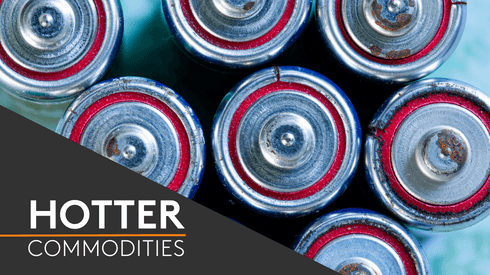In addition, participants in Europe were switching focus to the upcoming LME Week in London, where long-term contracts are expected to be discussed, further depressing spot activity in the European market.
• US premiums decline as sources say lower levels are needed to move material
• Asian markets muted with Chinese participants absent for extended National Day holiday
Europe
The European copper market was quiet over the past week, with participants noting that demand is weak and liquidity scarce.
A trader told Fastmarkets that the market was even “more boring” than in recent weeks.
Multiple sources said they had been hopeful of a demand pick-up after the traditional summer lull, but this has not materialized yet.
The trader noted that demand was slow and business was being conducted on a hand-to-mouth basis and any liquidity was to cover urgent needs.
Consumers sources agreed that the market is slow.
Some traders stated that the market was so slow that it “almost feels like a recession”.
“We have an issue here; the business environment is really weak, [and] it feels like a recession,” a second trader said last week regarding the outlook ahead of LME Week.
But they added that premiums were stable, saying “we seem to have reached somewhat of a bottom”.
Fastmarkets’ fortnightly assessment of the copper grade A cathode premium, delivered Germany, was unchanged at $180-200 per tonne on Tuesday, flat since August 22.
Fastmarkets’ fortnightly assessment of the copper grade A cathode premium, cif Rotterdam, was $110-130 per tonne on Tuesday, unchanged since July 11.
Fastmarkets’ fortnightly assessment of the copper grade A cathode premium, cif Leghorn, was $130-150 per tonne on Tuesday, unchanged since May 16.
Sources told Fastmarkets that with the fast-approaching LME Week in London, long-term negotiations were stealing focus, especially because spot business is so slow at present.
United States
The copper premium in the United States dropped sharply in the week to Tuesday, dropping by 15.38% on lower offers.
However, sellers, had nonetheless said since June that the US premium was unchanged in the absence of spot activity to alter them.
Fastmarkets’ assessed the copper grade 1 cathode premium, ddp Midwest US, at 7-9.5 cents per lb on Tuesday, down from 9.00-10.50 cents per lb on September 26 – a level that had previously been unchanged since June 27.
The premium has been as high as 10.00-12.00 cents per lb within the past year, last seen on May 23.
Reduced buying by China, amongst other factors clouding future demand, has depressed premiums in the US, sources said.
“China controls copper and very weak demand there is lowering premiums globally,” a US-based trader said.
Downward pressure endures, with offers below the new range having been reported to Fastmarkets. Producer premium offers to the trade were reported at 6 cents per lb, while some traders said they would likely have to offer copper to consumers at premiums of 6.5 cents per lb or less.
“I think you’d need to take at least 4 cents [per lb] off of published premiums if you want to move copper. We’re chasing the premium down,” a second US trader said.
Some sources pushed back. Among them, a third US trader said even an 8.50-cent copper premium was “weird,” too low.
A buyer who also said copper premiums were higher than the new range said, “There’s good long-term demand for copper.”
“This is also a time of year when people start to reduce their inventories,” he said.
Spot buying is also winding down amid uncertainty over the escalating United Autoworkers (UAW) strike in the US and with 2024 annual contracts expected to kick off at next week’s LME Week industry gathering, the source added.
Some 25,000 of the 145,000 UAW members are now on strike. Some 7,000 members joined on September 29 the strike that began September 15.
Asia
Holidays in China and a lack of liquidity in the Southeast Asian refined copper market meant premiums were largely unchanged in the region in the week to Tuesday.
Fastmarkets’ benchmark daily copper grade A cathode premium, cif Shanghai, was at $52-68 per tonne on Tuesday, flat since September 27 but narrowing upward from $50-68 per tonne on September 26.
Fastmarkets’ daily assessment of the copper grade A cathode premium, in-whs Shanghai, was $50-70 per tonne on Tuesday, unchanged since September 26.
Fastmarkets’ weekly assessment of the copper EQ cathode premium, cif Shanghai, was $20-30 per tonne on Tuesday, widening upward from $20-25 per tonne on September 26.
Fastmarkets’ weekly assessment of the copper grade A cathode premium, cif Southeast Asia, was $60-70 per tonne on Tuesday, unchanged September 19.
Follow all the latest LME Week insights by visiting our dedicated content hub.




